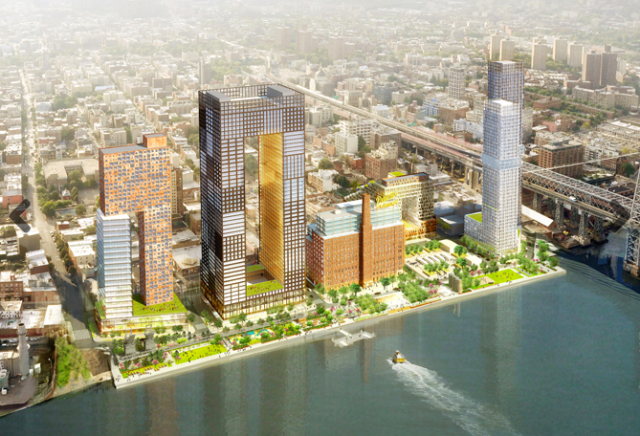Five Book Plan: Gentrification and Real Estate
Samuel Stein, author of Capital City: Gentrification and the Real Estate State, suggests five essential books on urban politics and planning.

Samuel Stein's Capital City: Gentrification and the Real Estate State shows how an explosive transformation of urban life and politics has been driven not only by the tastes of wealthy newcomers, but by the state-driven process of urban planning.
Here he selects his suggested essential readings on urban politics and planning:
1) Ipsita Chatterjee, Displacement, Revolution, and the New Urban Condition: Theories and Case Studies. SAGE Publications India, 2014.
In this book, geographer Ipsita Chatterjee dissects the capital- and state-driven phenomenon of “new build gentrification,” or the production of new luxury landscapes in formerly working-class areas. She shows how the state devalorizes spaces of produced by the poor, and revalorizes them as spaces of opportunity for the rich. In so doing, Chatterjee presents a comprehensive Marxist analysis of the process of gentrification. In Chatterjee’s explanation, gentrification is a form of alienation akin to the wage relation under capitalism: just as the surplus value workers produce is alienated by the capitalist boss, so too are the spaces workers collectively construct alienated by the real estate industry. This brilliant reframing of gentrification is just as applicable in New York City as it is in Ahmedabad, where the study was conducted.
2) Clyde Woods, edited by Jordan T. Camp and Laura Pulido. Development Drowned and Reborn: The Blues and Bourbon Restorations in Post-Katrina New Orleans. University of Georgia Press, 2017.
Clyde Woods was a brilliant urban planning theorist who brought together a deep knowledge of development history – plumbed from state archives and blues lyrics alike – with a Gramscian analysis of historical blocs and power struggles. This magisterial book, which was completed and published posthumously, describes the planned and calculated remaking of New Orleans after Hurricane Katrina as a project of asset-stripping, neoliberalization and gentrification. In order to make this case, Woods’ planning history goes back in time – not just to the years preceding the hurricane, or to the civil rights movement; not just to Huey Long or even the Great Flood; but all the way back to the area’s indigenous settlements, the city’s colonial founding, the beginnings of slavery and the rise of the planter class. In so doing, Woods shows that “planning” and “gentrification” are modern phenomena, but their roots stretch back through the history of racial capitalism.
3) Arlene Dávila. Barrio Dreams: Puerto Ricans, Latinos, and the Neoliberal City. University of California Press, 2004.
This seminal book brings together many strands often presented in isolation: race; class; culture; capital; and the state. It is an ethnography of East Harlem in the wake of the area’s designation as an “Empowerment Zone,” a neoliberal technology adapted by the Clinton administration from Thatcher’s England. Empowerment Zones are geographical areas that are targeted for tax cuts and limited regulations with the stated aim of inducing corporate investment into working-class neighborhoods. Planners were thus attempting to induce gentrification in East Harlem, and hoped to use the area’s cultural cache as a means toward that end. As Davila shows, this project met with serious resistance, but also support from elements of the community that endorsed this project to remake the neighborhood. It is thus a nuanced picture of both the complexities of urban community and the complexities of capitalist planning.
4) Robert Fitch, The Assassination of New York. Verso, 1993.
Fitch’s book serves as a bible to many left planners. It’s an idiosyncratic work, for sure – it jumps back and forth in time, goes down a few rabbit holes, and drops jokes in unexpected places – but it is extremely rewarding for all of those who seek a better explanation for how New York City developed over the course of the 20th century than “it’s all Robert Moses’ fault.” Of course, some read Fitch’s work and come away with a similarly reductive takeaway: “it’s all the Rockefellers’ fault.” This, however, is not what Fitch was trying to do. Instead, he used the Rockefellers as examples of how large landholders shaped the city’s planning priorities, and influenced non-profit planning experts to propose programs that just-so-happen to fit well with land owners’ particular needs. Read The Assassination of New York to learn the long history of New York City’s deindustrialization and the rising power of real estate capital.
5) Tom Angotti, New York for Sale: Community Planning Confronts Global Real Estate. MIT Press, 2008.
From its cover to its conclusion, New York for Sale shows that this city is “the real estate capital of the world.” Its department of city planning – where Angotti worked for several years – takes that slogan seriously, and has worked diligently to raise the city’s land and property values. This book is serves as an exposé of the way things work, but also an important catalogue of decades of community-based resistance to gentrification planning. As Angotti shows, grassroots organizations from the south Bronx to the Lower East Side have come together to build power, envision better plans, and fight to make them a reality. Given the forces they face, these are steep battles, and Angotti chronicles both their victories and their defeats with sober eyes. The book is thus an education in planning realities, a history of resistance, and a manual for future fights.
